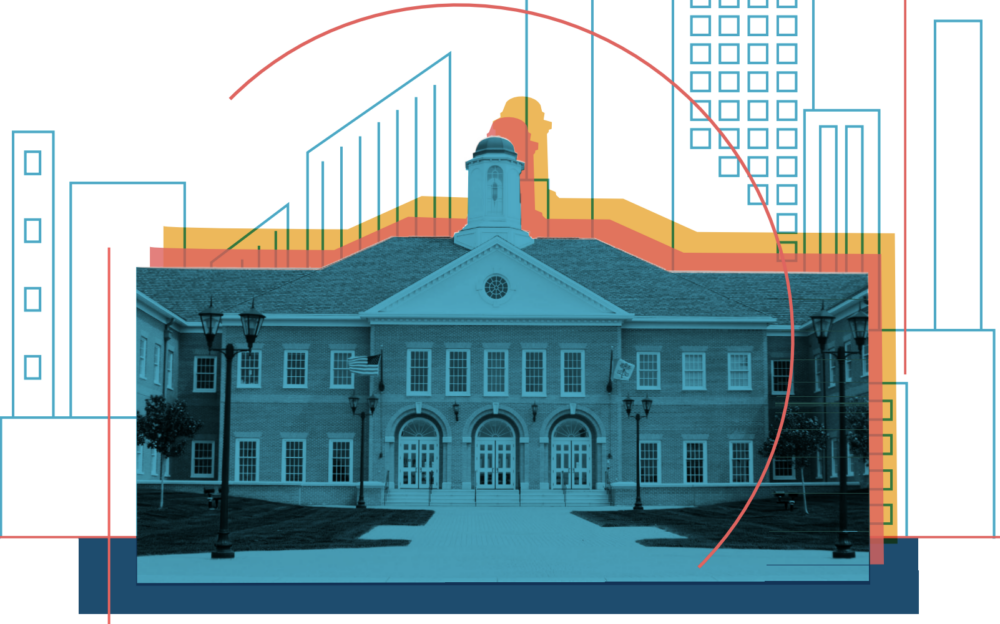

Public Sector Solutions
Education is one the largest targets of government spending, and the second largest focus of philanthropic spending (second only to religion). And still, students around the country are not graduating from high school, going to college, or getting jobs at the rates they should be. For students of color and those who live in poverty, these outcomes are significantly and detrimentally worse.
Good solutions exist that support students in their journeys through K-12, post-secondary, and career education. For example, programs like Dual Enrollment and Early College High School enable high school students to access college experiences and credits, leading to better preparation and faster (and therefore cheaper!) completion times. However, very few of these programs operate at scale. For the vast majority of students, education continues to look the same as it did decades ago; some districts are able to fund new programs, but most face extremely tight budgets and minimal flexibility or appetite to try new approaches.
This summer, Social Finance launched the country’s first four Pay for Success (PFS) feasibility projects in K-12 education with a grant from the Office of Career, Adult, and Technical Education at the Department of Education. Since then, our education exploration has blossomed into six feasibility projects focused on teacher retention, ninth grade readiness, and Career and Technical Education. PFS could help high quality programs make the jump to scale by enabling government leaders to try these solutions without risking precious budget dollars if the programs fail to deliver results. With nearly seven years of history and 20 PFS projects spanning a number of issue areas, why did it take so long for PFS to enter the world of education?
There are some basic tensions when applying PFS in an education context:
1. Holistic Interventions
Education “interventions” are broader and more complex than those that we typically see in PFS. Whole school reform models such as Career Academies and Early College High Schools involve a range of teachers, school leaders, students, parents, and often staff from external support organizations. This makes identical implementation from one setting to another nearly impossible. Further, strict codification of a model’s components, and adherence to it, is often illogical, given the varied nature of on-the-ground student needs.
2. Limited Evidence Base
PFS projects are grounded in the expectation that an intervention will deliver its intended outcomes. Typically, we rely on existing evidence to build the case for expanding a given intervention. In education, unfortunately, prior rigorous research on specific interventions is limited, particularly research using randomized control trials (RCTs) or other experimental methods. Randomization at the student level is challenging in the public school setting, and classroom level randomization has shortcomings according to many researchers, such as potential spillover effects as teachers observe peers in treatment classrooms and may inadvertently adopt some intervention practices. Thus, our work in education raises a question that has been at the forefront of the PFS field for years: how do we establish confidence without an RCT?
3. Positive Value that is Difficult to Quantify
There is clear public value from education for students, government, and employers, but the value is dispersed across stakeholders and government, diluting overall incentive for any single entity to sign up as a PFS payor. Further, the majority of value comes in difficult-to-quantify positive societal benefits — such as increased lifetime earnings and labor market talent — rather than cost savings. Most challenging, though, is the long time horizon over which these values accrue; for a program targeting middle school students, for example, it may be 15–20 years before post-secondary and employment outcomes are measurable.
4. Wrong Pockets: The Payor Challenge
Public education is funded through per pupil formulas across the Federal, state, and local levels, so identifying a payor with sufficient “stake” is complicated and varies across states. Although districts are a natural point of aggregation of these funds — and are ultimately responsible for deploying them — most districts run on tight budgets with minimal flexibility in decisions around how to direct those funds, due to baseline expenses and Federal and state requirements.
We are seeing all of these challenges in our current projects, and thinking through shifts in our approach to address them. Here are some of the things we’re finding:
- Success in education may mean that a “codified intervention” is a list of critical core “ingredients” that drive a program’s impact and can be delivered with some fluidity in a given school context.
- We may need to rely on the wealth of non-experimental evidence on many educational programs that have strong track-records of improvement against prior or average performance. Given the low baseline of educational outcomes in many places in the U.S., if we have good reason to believe that a program has driven improvement in the past, perhaps we should be willing to take on a bit more risk to expand access to that program for more underserved students.
- Positive value may need to be based on interim indicators of long-term benefits (such as third-grade reading), and will absolutely need to account for positive social value, not just cost savings.
- Finally, the role of the payor may look different in education: perhaps a district redirects funds from an existing set of courses to a career pathways sequence, or the business community steps up to pay based on the promise of a better educated local workforce.
We need to find higher impact solutions in education; we need to take the bet to change the status quo. The lessons of PFS can guide the way, urging us to consider evidence of past impact, articulate positive societal value, and work with jurisdictions across the funding landscape. Some have critiqued PFS, saying that it only applies to a narrow set of programs that meet a strict set of criteria, and that broader application will require significant adaption. Right now, at Social Finance, we are working to find those adaptions to broaden our approach and bring the benefits of PFS to K-12 education, cracking open the door of opportunity for better outcomes for all students in this country.
Related Insight

Increasing Access to Nursing Education: Student-Centered Income Share Agreements as a Potential Solution
Making nursing education more affordable can help address the industry shortage and provide economic opportunity for students who may not otherwise be able to pursue nursing careers.

Helping Career and Technical Education Programs Meet this Moment
High-quality career and technical education (CTE) can help boost in-demand employment opportunities for young people. However, education providers face unprecedented budget pressures as a result of the pandemic. Against this backdrop, we spoke with CTE…

Campus and Community: Transformative Partnerships Unlocking the Future of Higher Ed
Social Finance conducted research on recent college closures and interviewed a wide range of experts to understand bold, new transformations for postsecondary institutions to adapt to an increasingly uncertain future.